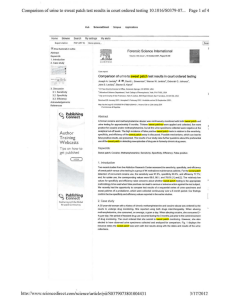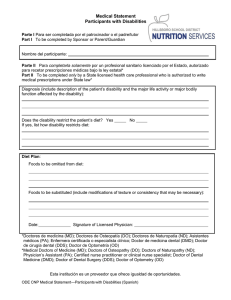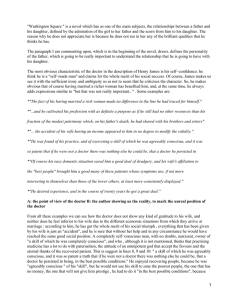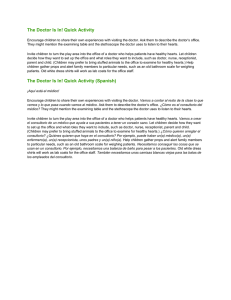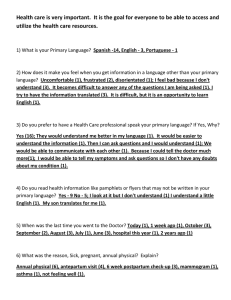Know Sweat! Harris Survey Executive Summary
Anuncio
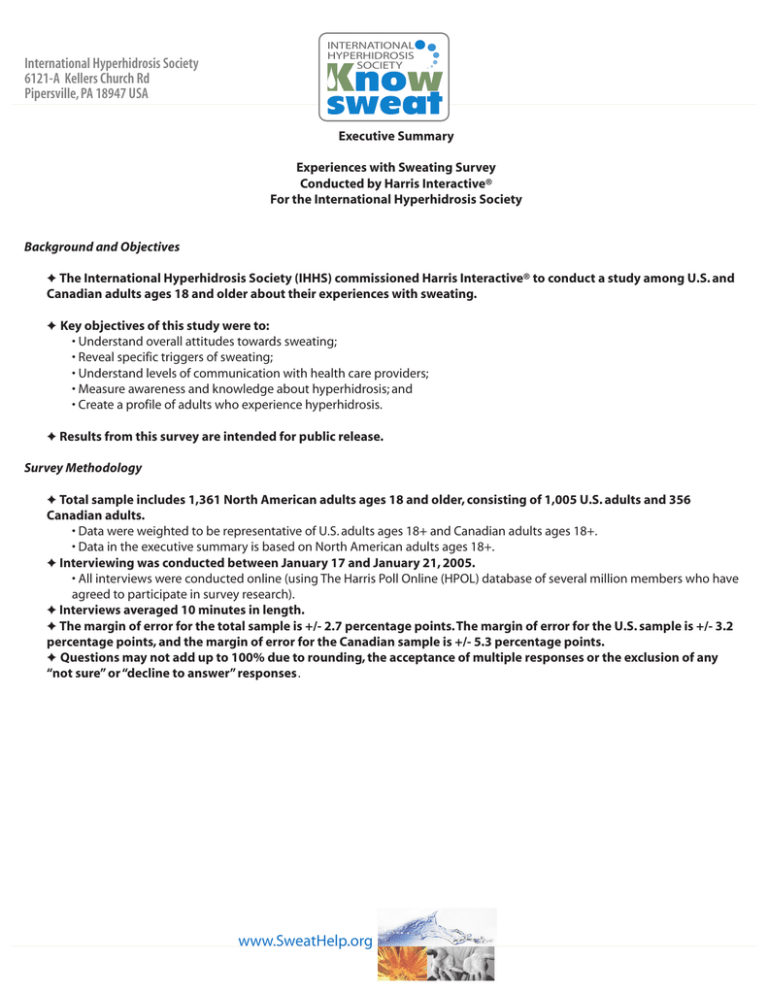
INTERNATIONAL HYPERHIDROSIS SOCIETY International Hyperhidrosis Society 6121-A Kellers Church Rd Pipersville, PA 18947 USA Executive Summary Experiences with Sweating Survey Conducted by Harris Interactive® For the International Hyperhidrosis Society Background and Objectives ✦ The International Hyperhidrosis Society (IHHS) commissioned Harris Interactive® to conduct a study among U.S. and Canadian adults ages 18 and older about their experiences with sweating. ✦ Key objectives of this study were to: • Understand overall attitudes towards sweating; • Reveal specific triggers of sweating; • Understand levels of communication with health care providers; • Measure awareness and knowledge about hyperhidrosis; and • Create a profile of adults who experience hyperhidrosis. ✦ Results from this survey are intended for public release. Survey Methodology ✦ Total sample includes 1,361 North American adults ages 18 and older, consisting of 1,005 U.S. adults and 356 Canadian adults. • Data were weighted to be representative of U.S. adults ages 18+ and Canadian adults ages 18+. • Data in the executive summary is based on North American adults ages 18+. ✦ Interviewing was conducted between January 17 and January 21, 2005. • All interviews were conducted online (using The Harris Poll Online (HPOL) database of several million members who have agreed to participate in survey research). ✦ Interviews averaged 10 minutes in length. ✦ The margin of error for the total sample is +/- 2.7 percentage points. The margin of error for the U.S. sample is +/- 3.2 percentage points, and the margin of error for the Canadian sample is +/- 5.3 percentage points. ✦ Questions may not add up to 100% due to rounding, the acceptance of multiple responses or the exclusion of any “not sure” or “decline to answer” responses. www.SweatHelp.org Experiences with Sweating ✦ Sweating is a common experience for the majority of adults. • About six out of ten adults (63%) sweat some or all of the time in their daily life. Most commonly, it is the underarms that produce the most sweat (39%) • Nearly one out of five (19%) adults sweat all the time or feel that they sweat the same amount in almost all situations • While most adults feel they sweat either the same or less than their peers, about one out of five (21%) feel they sweat more than others • About one out of five adults (16%) perceive their sweating to be “too much” ✦ For many adults, sweating does carry with it some negative connotations – however this is not overwhelmingly so. Many adults feel that sweating is not as unpleasant compared to many other potentially embarrassing situations. • Two-thirds of adults (66%) perceive someone who is sweating to be “nervous” and half (50%) would think the person is overweight or out of shape • However, four out of ten adults (42%) think a person they see sweating is hard-working • Roughly half of adults consider extreme sweating in public to be less embarrassing than such experiences as losing one’s hair (51%), having gas (53%), burping (51%), having one’s fly open (51%) and having severe acne (52%) Sweating Triggers and Treatment ✦ What makes people sweat? By far, job related situations are the most common cause of adults’ sweating and is most bothersome when it occurs. Regardless of what triggers the sweating, or how it makes people feel, the vast majority do something to tackle their perspiration. • Just over six out of ten adults (62%) say that work situations are the most typical trigger that causes their sweating – social situations (42%) come in as a fairly distant second • Nearly half of adults (49%) say that being around their manager or colleagues have stimulated their sweating – just slightly edging out law enforcement (41%) and family (39%) • Four out of ten adults whose work causes their sweating (41%) say that it makes them feel very upset, with a nearly equal amount of adults who sweat because of social situations that feel this way (39%) – Although public speaking encourages sweating in about a quarter of adults (28%), it is considered to be fairly bothersome when it occurs (35%) • Nearly nine out of ten adults (86%) are proactive about dealing with their sweating – typically by using deodorant or antiperspirant (79%) Knowledge and Communication ✦ A large number believe that hyperhidrosis is a condition that can be treated by a doctor, yet only two in five would seek medical care if they experienced excessive sweating. Further, only about one out of ten adults have ever talked to their health care professional about their sweating. • Four out of ten adults (41%) would talk to their doctor if they experienced excessive sweating, but six out of ten (61%) perceive the condition as treatable by a doctor • Few adults (8%) have ever talked to a health care professional about their sweating – Among those who have not had this kind of conversation, the most common reason is feeling they do not have a problem (87%) • Few adults are aware of hyperhidrosis – but those who are correctly identify that the term means severe sweating. • About one out of ten adults (12%) have heard of “hyperhidrosis” – of these adults, the vast majority (91%) know that this terms means excessive sweating – Although public speaking encourages sweating in about a quarter of adults (28%), it is considered to be fairly bothersome when it occurs (35%) – Nearly nine out of ten adults (86%) are proactive about dealing with their sweating – typically by using deodorant or anti-perspirant (79%) . INTERNATIONAL HYPERHIDROSIS SOCIETY www.SweatHelp.org 2 Analysis by Gender ✦ Men are more likely than women to say they sweat frequently, and they are less likely than women to feel embarrassed by their sweating. Women are more proactive than men about addressing their sweating including talking with their doctor. • Men are more likely to believe they sweat sometimes or all of the time (70% men vs. 57% women) - Women are more likely to say that social situations (particularly having a difficult conversation with someone) triggers their sweating (48% women vs. 37% men) as do their family members (45% women vs. 32% men) • Men are more likely to feel that extreme sweating is less humiliating than other circumstances such as having gas, having one’s fly open, having severe acne or being obese • Men are more likely to have received attention because of their sweating (12% men vs. 7% women) • Women are more likely to use something to help reduce their sweating such as using deodorant (85% women vs. 73% men) or wearing/avoiding certain clothes (36% women vs. 27% men) • Women are more likely to say they would see a doctor if they experienced excessive sweating (46% women vs. 35% men) Analysis by Subset of People Who Sweat All the Time and People Who Sweat the Same Amount in Almost All Situations (19 percent of survey population) ✦ The people in this subset are keenly aware of their condition – they are more likely to believe that they sweat too much (and more so than others do), feel it is something to be embarrassed about and have been the object of unwanted attention because of their sweating. • They are more likely to feel their emotional well-being has a substantial impact on their overall health (69% vs. 56% those who do not have hyperhidrosis) • They are far more likely to feel that they sweat more than others (49% vs. 14%) and are about six times as likely to feel that they sweat “too much” (46% vs. 8%) • They are more likely to sweat equally around all people, not one type of person more than another (41% vs. 11%). • They are more likely to take action to help prevent their sweating (96% vs. 84%) • They are more likely to feel extreme sweating in public is more embarrassing than a number of situations such as having stage fright (34% vs. 21%), having gas (37% vs. 21%), having one’s fly open (34% vs. 21%), having severe acne (30% vs. 17%), and being obese (30% vs. 20%) • They are more likely to report that someone has negatively reacted to their sweating (17% vs. 7%) ✦ However, the people in this subset are no more likely to be aware of hyperhidrosis as a treatable health care condition, and a large majority have never discussed their condition with a healthcare provider. This is despite the fact that a majority of adults – regardless of whether sweating is an issue for them or not – believe that excessive sweating is something that can be treated by a doctor. • About one out of ten adults, regardless of whether they experience excessive sweating, have heard about the term “hyperhidrosis” (13% of adults with hyperhidrosis and 11% of those who do not have hyperhidrosis) • About eight out of ten of adults with hyperhidrosis (82%) have not talked to a health professional about their sweating – mostly because they do not feel they have a problem (59%) • Nearly seven out of ten of these adults (68%) think that excessive sweating can be treated with medical care, as do 59% of those who do not suffer from excessive perspiration ### INTERNATIONAL HYPERHIDROSIS SOCIETY www.SweatHelp.org 3
